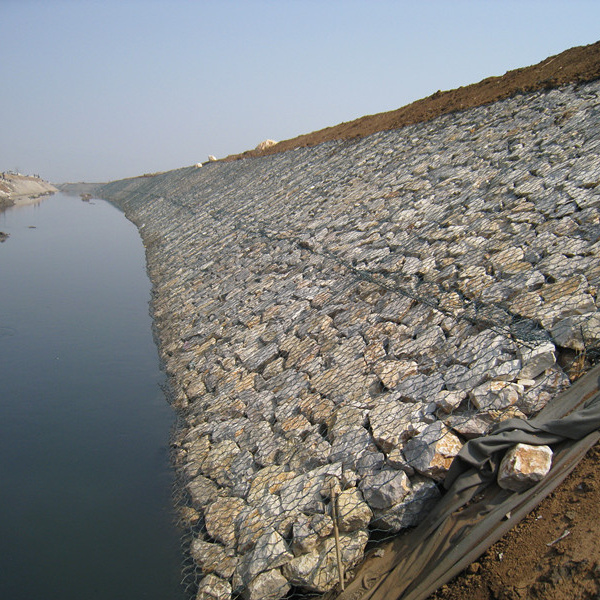Nov . 12, 2024 17:08 Back to list
welded gabion baskets factory
Welded Gabion Baskets A Comprehensive Overview of Factory Production
Gabion baskets have become an integral component in modern landscaping and civil engineering projects. Among the various types available, welded gabion baskets stand out due to their robust construction and versatility. This article will delve into the intricacies of welded gabion basket production in factories, highlighting the process, benefits, and applications.
Understanding Welded Gabion Baskets
Welded gabion baskets are wire mesh containers filled with rocks, stones, or other materials used for erosion control, landscaping, and retaining walls. Unlike traditional woven gabions, welded gabion baskets feature a grid-like structure that ensures higher strength and durability. The materials used in their construction typically consist of galvanized or PVC-coated steel wire, providing resistance against corrosion and enhancing longevity.
Production Process of Welded Gabion Baskets
The production of welded gabion baskets involves several critical steps, each crucial in ensuring the final product meets industry standards for quality and durability.
1. Material Selection The first step in production is choosing high-quality wire. Factories purchase steel wire from trusted suppliers, ensuring it meets specifications for galvanization and coating. The standard thickness ranges from 2.0 mm to 4.0 mm, depending on the intended application of the gabion baskets.
2. Welding The selected wire undergoes a welding process where it is cut into required dimensions and welded at intersections to form a solid mesh structure. Advanced machines often perform this operation, ensuring precision and consistency across all pieces. This step is where the strength of the welded gabion basket is established.
3. Cutting and Shaping After welding, the mesh is cut into specific sizes, typically in rectangular or square shapes. Factories can customize dimensions according to client needs, creating baskets of various sizes to suit different projects.
4. Coating To enhance corrosion resistance, the welded gabion structures are coated with a layer of zinc or PVC. This protective layer is vital, especially in environments with high moisture levels. The coating process ensures that the wire will withstand the elements and prolong the lifespan of the gabion basket.
welded gabion baskets factory

5. Quality Control Once the baskets are fabricated, factories conduct thorough quality control checks. This involves inspecting the strength of the welds, the uniformity of the coating, and overall structural integrity. Quality assurance is crucial to ensure the baskets will perform effectively in their applications.
6. Packaging and Shipping The final step in the production process involves packaging the gabion baskets for shipment. Factories often flatten the baskets to optimize space and reduce shipping costs. Baskets are bundled together and secured to prevent damage during transportation.
Benefits of Welded Gabion Baskets
The advantages of using welded gabion baskets are numerous. Their robust construction allows them to withstand harsh environmental conditions, making them ideal for erosion control along riverbanks, highways, and slopes. They provide effective drainage, allowing water to flow through, which reduces hydrostatic pressure behind walls.
Additionally, welded gabion baskets are aesthetically pleasing and can be easily integrated into various landscaping projects. They promote vegetation growth, creating natural habitats and enhancing biodiversity. Gabions can also be filled with various materials, from natural stones to recycled concrete, making them a sustainable choice for modern construction.
Applications in Civil Engineering and Landscaping
Welded gabion baskets find applications across multiple domains. In civil engineering, they are commonly utilized for retaining walls, bridge abutments, and riverbank stabilization. Their flexibility in design and application allows for tailored solutions specific to project requirements.
In landscaping, they serve as decorative elements, garden borders, and noise barriers. More innovative uses include creating outdoor furniture, planters, and art installations, showcasing the versatility of welded gabion baskets in transforming spaces.
Conclusion
Welded gabion baskets are a testament to the blend of engineering and creativity in modern construction. The factory production process, from material selection to quality control, ensures the durability and effectiveness of these structures. As the demand for sustainable and functional design continues to grow, welded gabion baskets are likely to play an essential role in shaping our environments. With their strength, aesthetic appeal, and ecological benefits, they stand as a preferred choice for professionals in landscaping and civil engineering.
-
Visualizing Gabion 3D Integration in Urban Landscapes with Rendering
NewsJul.23,2025
-
The Design and Sustainability of Gabion Wire Mesh Panels
NewsJul.23,2025
-
The Acoustic Performance of Gabion Sound Barriers in Urban Environments
NewsJul.23,2025
-
Mastering the Installation of Galvanized Gabion Structures
NewsJul.23,2025
-
Gabion Boxes: Pioneering Sustainable Infrastructure Across the Globe
NewsJul.23,2025
-
Custom PVC Coated Gabion Boxes for Aesthetic Excellence
NewsJul.23,2025
-
Installation Tips for Gabion Wire Baskets in Erosion Control Projects
NewsJul.21,2025






